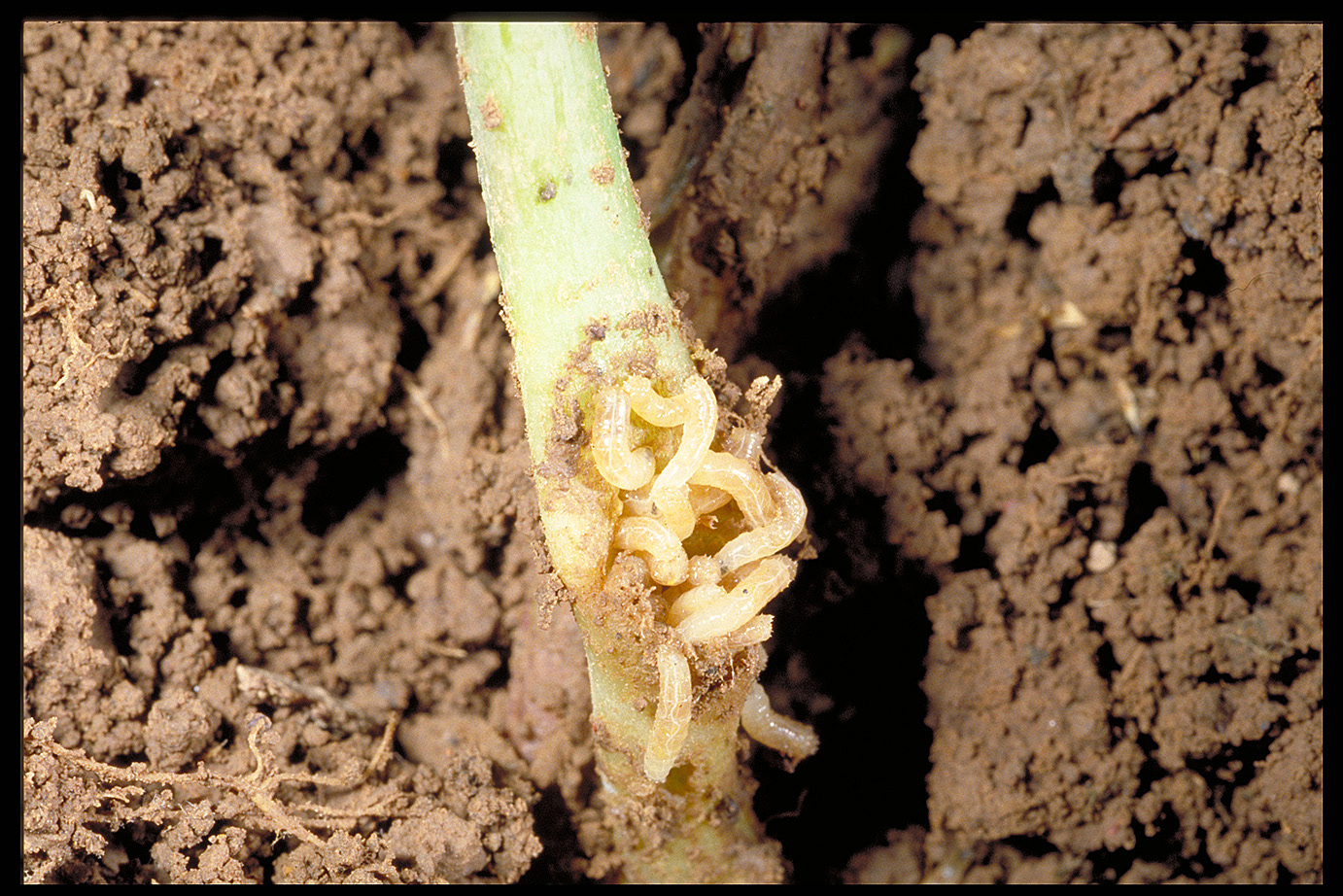Cabbage and Seedcorn Maggots
Return to Insect Pests
Cabbage and seedcorn maggots (Delia spp.) are in a group of flies that can attack the roots of vegetables. These pests are favored by early planting dates, heavy cover crops, and cool-wet weather. When stand loss or plant injury due to maggots becomes apparent, there are no effective rescue treatments available. These maggots are yellowish white and grow to about 1⁄4 inch in length when mature. The body is legless with a pointed head and a blunt tail. After about 3 to 4 weeks, the larvae pupate in the soil. The brown pupal cases are hard and football-shaped and are found in the soil near the roots. The adult is a dark gray fly with smoky-gray wings, black legs, and three stripes on its back.

Cabbage maggot on stem of transplant
(Photo: UK Vegetable IPM Team, University of Kentucky)
Management:
- Transplanting after the peak of adult emergence and egg laying in the spring will avoid problems.
- Plow fields at least 3-4 weeks before planting, as freshly plowed fields are attractive for egg laying.
- Soil drenches with an insecticide at transplanting is helpful if these flies are active.
